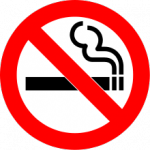 Department of Health publish new guidelines for “Tobacco Harm Reduction”
Department of Health publish new guidelines for “Tobacco Harm Reduction”
Struggling to quit? ‘Swap tobacco for nicotine’, advises new guidance from NICE
Today sees the National Institute for Health and Care Excellence (NICE) publish new guidelines for tobacco harm reduction in the UK. This world first, recognises that some people may not be able to quit smoking in one step.
At the heart of tobacco harm reduction is the concept that the flexible and long-term use of nicotine is always better for smokers and people around them than continuing to smoke tobacco. Experts believe this will provide a significant opportunity to help many more smokers to quit.
Smoking remains the single biggest preventable cause of early death and illness in the UK, with  one in five adults (around 10 Million) being smokers[i]. Approximately half of persistent cigarette smokers are killed by their habit and a quarter are still in middle age[ii]. Tobacco control measures have led to a decrease in smoking prevalence but the decline in smoking rates has lost momentum in recent years with no significant change in the prevalence of smoking in the last six years.[iii]
one in five adults (around 10 Million) being smokers[i]. Approximately half of persistent cigarette smokers are killed by their habit and a quarter are still in middle age[ii]. Tobacco control measures have led to a decrease in smoking prevalence but the decline in smoking rates has lost momentum in recent years with no significant change in the prevalence of smoking in the last six years.[iii]
The annual cost to the NHS attributable to smoking is estimated at around £2.7bn[iv]. Smoking is the leading cause of lung cancer, with recent figures published in the Annals of Oncologyshowing the number of lung cancer cases in the UK – particularly among women – is still rising.[v]
To date, stop smoking services have been available to those smokers who want to quit in one step with, or without, the help of an NRT (such as gums or patches). The amount of NRT offered varies but tends to range from four – 12 weeks on prescription, with some smokers receiving the support from a Stop Smoking advisor.
The new tobacco harm reduction recommendations understand that the journey to quitting is different for every smoker. It no longer needs to be ‘succeed or fail’ by a set deadline. The journey can now involve flexible and long-term use of NRT. This will give healthcare professionals the opportunity to bring more people into the stop smoking services and make inroads into smoking prevalence.
Watch our video with GP and stop smoking expert, Dr Chris Steele, to find out more about the new Tobacco Harm Reduction guidelines and how they could ‘revolutionise’ the way the UK tackles its smoking problem
Key Statistics
- Adult smokers in the UK in 2010:10 Million
- Recent figures show the number of lung cancer cases in the UK – particularly among women – is still rising
- Smoking is the single biggest cause of social inequalities in death rates between the richest and poorest in our communities
- Approx. half of persistent cigarette smokers are killed by their habit—a quarter while still in middle age (35–69 years)
- 79,100 deaths (adults aged 35 and over) in 2011
- On average, cigarette smokers die about 10 years younger than non-smokers
- Switching 1% of smokers a year from tobacco to less harmful nicotine could save around 60,000 lives in only 10 years
- Smoking cessation is the most cost-effective health intervention in the NHS and one of the most effective ways to prevent early deaths
The financial burden
According to the Policy Exchange, the annual costs to society from smoking are £13.74 billion[vi]
- Cost of treating smokers on the NHS (£2.7 billion)
- Smoking related house fires (£507 million)
- Loss in productivity from smoking breaks (£2.9 billion) and increased absenteeism (£2.5 billion)
- Loss in economic output from the deaths of smokers (£4.1 billion) and passive smokers (£713 million)
- Cleaning up cigarette butts (£342 million)
[i] NHS, Statistics on Smoking in England, 2012
[ii] Doll, R. et al. BMJ; 2004;328:1519–27
[iii] General Lifestyle Survey Overview. Office of National Statistics 2011
[iv]Policy Exchange – Cough up: Balancing tobacco income and costs in society, March 2010
[v]M. Malvezzi, P. Bertuccio, F. Levi, C. La Vecchia and E. Negri, European cancer mortality predictions for the year 2013. Annals of Oncology, February 2013
[vi] Policy Exchange – Cough up: Balancing tobacco income and costs in society, March 2010